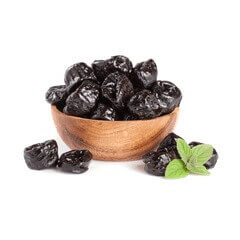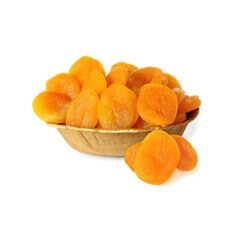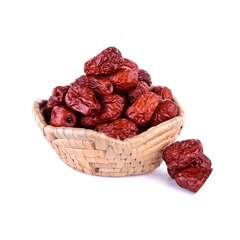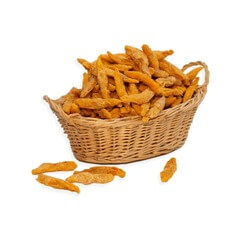Hazelnuts
- Home
- Nuts & Seeds
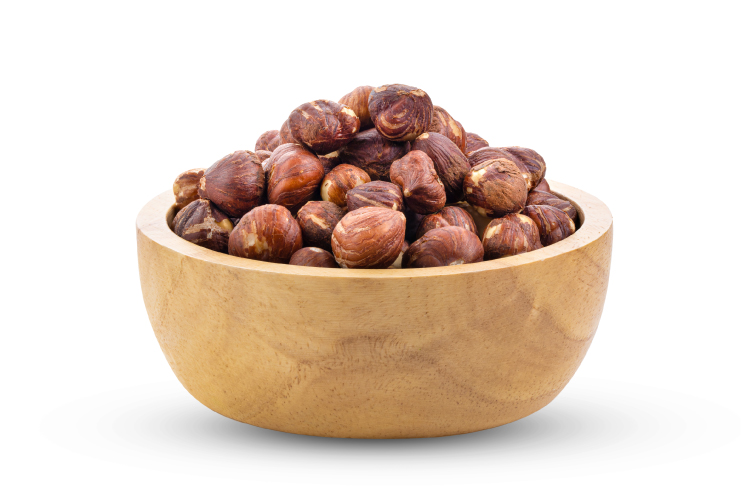
Hazelnuts
The hazelnut is an oilseed from the hazel tree. Antioxidant and satiating, this little nut does not lack assets. It slips easily into many recipes, savoury or sweet.
The hazel tree, a shrub of the Betulaceae family, is recognized and appreciated for its fruit, i.e., hazelnut.
Adnoor: Best Hazelnut Supplier in Canada
In the kitchen, it is the food of choice. It increases the power of a dish lacking character or the crunchiness of a dessert lacking in texture. Hazelnuts easily reach the stove and can easily reach the medicine cabinet.
Buy Hazelnut in Bulk: A Super Food
Being highly rich in vitamin E, they help fight against oxidative stress. This oxidative stress accelerates cell aging and amplifies the risk of cardiovascular disease.
Moreover, hazelnuts are among the foods richest in vitamin E. Regarding cardiovascular diseases, oleic acid (the predominant fatty acid in Hazelnuts) reinforces this protective power. Hazelnuts are full of many other nutrients, such as group B vitamins: B1, B5, B6 and B9. This vitamin combination helps the body on several levels: strengthens immunity, regulates hormones, improves memory, etc.
Let’s not forget the minerals and trace elements, such as manganese, copper, iron or magnesium. These improve the appearance of hair and nails, contribute to the prevention of anemia, and so many other benefits that make hazelnut a healthy superfood.
Recommended Consumption of Hazelnuts
Due to the energy density of Hazelnuts and their high polyunsaturated fatty acid content, daily consumption recommendations are defined. As a classic treatment or for pleasure, a portion of Hazelnuts is estimated at 15g per day, which represents about fifteen Hazelnuts per day.
In What Form? To make the most of their benefits, you can use the following:
| At What Time of The Day? We advise you to use them during the following meal(s) to make the most of their benefits:
|
What Modes of Use?
You can incorporate Hazelnuts into the following preparations to make them easier to take:
Salad | Soup | Dessert | Yogurt |
Flat | Dairy | Mixed with other dried fruits | Muesli |
Adnoor Wholesale Hazelnut Supplier: Meeting the Population’s Dietary Needs
15 g of Hazelnuts contain a significant portion of the Population’s Dietary References of the following nutrients: Copper, Manganese, and Vitamin E. They also contain, to a lesser extent, Proteins, Fibers, Potassium, Iron, Selenium, Zinc, Magnesium, Phosphorus, Vitamin B1, Vitamin B5, and Vitamin B9. In short, Hazelnuts can complement your healthy and varied diet.
Buy Hazelnuts as they Regulate Metabolism.
Hazelnuts help slow the progression of cardiovascular pathologies and type 2 diabetes while preventing complications. Rich in oleic acid, antioxidants, and potentially anti-inflammatory, they protect the vascular system from atherosclerotic plaques. In addition, the high fibre content lowers cholesterol levels and helps the body regulate blood sugar.
Hazelnuts Aids in Digestion
Constipation is often synonymous with insufficient fibre intake. Adding a few hazelnuts to your eating habits increases fibre intake and thus restores digestive transit.
Bulk Hazelnuts Strengthen Immune System
Nutrition modulates the immune response. Indeed, copper, iron, and vitamin B6 modulate the functioning of immune cells. In addition, selenium and zinc participate in the formation of certain white blood cells.
As part of a varied and balanced diet, these nutrients provide hazelnuts with benefits for immunity.
Adnoor Hazelnuts: Maintaining your Nervous System Well-Being
Hazelnuts stimulate the organism. First, they bring energy to the body through the lipids that compose them. In addition, they offer several micronutrients involved in energy metabolism (e.g. zinc, vitamin B6, copper, magnesium).
They also prevent fatigue by contributing to magnesium, vitamin B6, iron, and vitamin B5 intake. These last two, moreover, are associated with zinc-boosting intellectual functions.
This maintenance of general shape is also observed in the nervous system. Indeed, potassium and calcium participate in nerve transmission. However, this general energizing power does not amplify stress. These same micronutrients (magnesium, vitamin B1, B9, B6, and B5) contribute to the normal synthesis of neurotransmitters, which tends to balance emotions.
Body, Face, and Hair Care through Hazelnut Supplier in Canada
Brittle hair or nails can come from zinc or selenium deficiencies. Hazelnuts bring these two trace elements, contributing to their solidity. In addition, Hazelnuts contain copper, which enhances the intensity of hair colour.
The skin also benefits from copper and zinc since they act respectively to protect and maintain the skin. On the overall appearance of the skin, they provide copper and manganese. By their actions on the connective tissue, they restore volume to the skin, which reduces the appearance of wrinkles.
The Solidity of the Bone System
Bone demineralization increases their fragility and the risk of fractures. Hazelnuts are full of minerals and trace elements that will be stored in the bones. This mineralization strengthens the strength of the bones. By providing these minerals, Hazelnuts contribute to the solidity of bones, to be integrated into a balanced diet. So, buy bulk hazelnuts to continue strengthening your bone system.
Improves Circulatory System
Anemia is multifactorial. Among these factors, we find dietary imbalances. Hazelnuts fight against deficiencies in iron, vitamins B9, and B6: a deficit of one of these nutrients disrupts the synthesis of red blood cells. Finally, Hazelnuts are rich in copper, and copper promotes the bioavailability of iron. As part of a healthy lifestyle, the nutrients in hazelnuts help prevent anemia.
Nutritional Properties of Hazelnuts
Main Properties
Antioxidant (flavonol, copper, manganese, selenium, zinc, vitamin E): Hazelnuts have a high antioxidant capacity. Indeed, the ORAC score of Hazelnuts is estimated at 9645 µmol TE/100g. The concentration of antioxidant trace elements explains this score. We find copper, manganese, selenium, and zinc, which metabolize free radicals by activating antioxidant enzymes. Hazelnuts also have a phenolic compound (flavonols) and vitamin E, which are powerful antioxidants. So, buy hazelnuts from Adnoor to supply your body with essential nutrients. Cardiovascular Protector (oleic acid, fibre, vitamin E, flavonol, copper, selenium, manganese, zinc): Hazelnuts protect against cardiovascular complications thanks to their lipid profiles. They are mainly composed of omega 9: oleic acid. Oleic acid is involved in cholesterol metabolism and is known to protect the cardiovascular system. In addition, Hazelnuts fight against cholesterol peroxidation and inflammation, which protects the vessels from atherosclerotic plaques. Finally, fibre reduces the absorption of cholesterol. Appetite Regulator (fibre, lipids): Hazelnuts have a low glycemic index due to their low sugar content, rich in lipids and fibres. Thus, they help the body to regulate blood sugar, and a stable blood sugar level promotes the feeling of satiety. | Contributing to Fertility (zinc, selenium): Hazelnuts contribute to male fertility. Vectors of zinc and selenium, these micronutrients, intervene in the functioning of the reproductive functions of the man. Zinc composes seminal fluid and maintains testosterone levels (a hormone involved in libido and the development of secondary sexual characteristics); selenium participates in the synthesis of spermatozoa. Laxative (fibre): Hazelnuts are rich in insoluble fibre. Insoluble fibres have the power to swell in contact with water. Within the intestinal lumen, they increase the volume of the stool, which accelerates transit. Contributing to Energy Metabolism: Hazelnuts have lipid energy. These deniers have a high energy yield: 9 kcal for 1 g of lipid consumed. This means that small amounts of Hazelnuts are enough to refuel the body. Especially since they provide many micronutrients of energy metabolism, we are talking about zinc, manganese, phosphorus, magnesium, copper, iron, calcium, and vitamins B9, B6, B1, and B5. |
Secondary Properties of Hazelnuts
Anti-Inflammatory (vitamin B9, vitamin B6):
Hazelnuts are rich in vitamin B9 and a source of vitamin B6. These neutralize homocysteine, a pro-inflammatory amino acid. More precisely, it is through the methionine cycle that vitamin B9 intervenes; this cycle transforms homocysteine into methionine, a non-inflammatory amino acid. Vitamin B6 acts as a cofactor to produce cysteine from homocysteine. Cysteine is also important, and it is non-inflammatory.
Immunomodulating (copper, selenium, vitamin B9, iron, zinc, vitamin B6):
Hazelnuts encourage the proper functioning of the immune system by providing immunomodulating nutrients. Adnoor: the best Hazelnut supplier in Canada offers you to buy Hazelnuts in bulk to stay healthy.
Skin Regenerator (copper, manganese, zinc):
Hazelnuts help maintain healthy skin by providing zinc. In addition, they contribute to the formation of connective tissue thanks to copper and manganese. Connective tissue supports the skin and contributes to its general appearance.
Skin Protector (copper):
Hazelnuts are rich in copper. Copper participates in the formation of melanin. This pigment acts as a screen against the sun’s ultraviolet rays, which protects the genetic apparatus of the cells.
Anti-Anemic (copper, vitamin B9, iron, vitamin B6):
Copper, iron, and vitamins B9 and B6 are necessary for synthesizing red blood cells: erythrocytes. Hazelnuts contain these three nutrients; they thus contribute to the formation of red blood cells. Especially since they are rich in copper: copper participates in iron transport. Iron is, therefore, readily mobilized for erythropoiesis.
Remineralizing (magnesium, phosphorus, manganese, calcium, vitamin B5):
Buy hazelnuts as they contain minerals, especially magnesium, phosphorus, zinc, manganese and calcium. All of them are stored in the bones, which contributes to their strength. The strong point of Hazelnuts is their vitamin B5 content. Vitamin B5 participates in the metabolism of vitamin D: a vitamin that increases the absorption and fixation of calcium.
Hair Fortifier (copper, selenium, zinc):
Copper, selenium, and zinc influence the appearance of the hair. Copper stimulates the formation of melanin, which influences hair pigmentation. Selenium and zinc will help maintain hair. By providing these three trace elements, Hazelnuts strengthen the solidity and colour of the hair.
Hazelnuts FAQs
In a pan, place the hazelnuts in a single layer and heat over medium heat. Mix regularly. Five to ten minutes maximum is enough to roast the hazelnuts in the pan. Remove the hazelnuts in a container or on a clean cloth and let them cool before use. You can also roast hazelnuts in an oven or over a wood fire.
Don’t give nuts or hazelnuts either to your dog. Although hazelnuts are not toxic to dogs, giving them to the dogs is not recommended as they can act as a source of choking. Even if it may seem “anecdotal,” they are not without danger. Macadamia nuts and walnuts are considered to be the most dangerous for dogs among oilseeds.
For sure, Hazelnut is a tree nut. Common tree nuts, among others, include walnuts, almonds, Brazil nuts, macadamia nuts, cashews, pine nuts, pistachios, and pecans.
Although walnuts and hazelnuts may taste similar, they should not be confused! Both are oilseeds, and the walnuts are consumed directly after harvesting, while the hazelnuts are harvested a little before maturity.
Hazelnuts are extremely rich in vitamin E, and they fight against oxidative stress. This oxidative stress accelerates cell aging and amplifies the risk of cardiovascular disease. Moreover, hazelnuts are the cardiovascular protector and have antioxidative and immunomodulating properties. They help in the regulation of metabolism and strengthen the immune system.
Delicious in cakes, original in dishes, and tasty to snack on, there is always a good reason to eat hazelnuts. In addition to being delicious, they are an excellent ally for health, which fights heart disease and cholesterol. Hazelnuts have an antioxidant effect thanks to a high content of vitamin E, but they also have other antioxidant compounds such as tannins, phenolic acids, as well as flavonoids. About ten hazelnuts per day correspond to 20% of the recommended daily intake of vitamin E! They protect against the risk of cancer thanks to the combined effect of fibres, vitamins and minerals.
Hazelnuts are such a treat to pick up and nibble on. If you have a love for cooking, then you can make some amazing recipes with hazelnuts like Praline paste, Shortbread, Cakes, Chocolate Hazelnut Brownies, Quince, apple and Hazelnut tart, Hazelnut spread (homemade Nutella), Hazelnut and milk chocolate shortbread, Homemade chocolates, ganache and Hazelnut, and much more. You will surely enjoy these delicious recipes.
Some hazelnuts need you to rub them individually so that the peel comes off well. Others may keep a little skin, but that’s fine; it will also bring a little more essence to your recipes!
If you really want to peel hazelnuts, then put them in boiling water for a few minutes, and after removing them from the water, take a knife and remove the skin from them. This is an easy way of peeling the hazelnuts.
Feed the crows with something healthy like nuts, i.e., hazelnuts, walnuts, peanuts and almonds etc. If you feed hazelnuts to the crow, always ensure they are without sugar and salt. But keep in mind that they are wild birds that are habitual in gathering their food. So, don’t throw hazelnuts at them and don’t feed them with too many. A few hazelnuts are enough for them.
